The State of Call Centres
Call centres are an important part of any organisation, although they’re often treated as an afterthought. The primary way that customers will communicate with your business, they’re responsible for resolving customer problems, selling new products, and conducting market research.
Whilst call centres used to be large, open-plan offices, there’s been a move towards virtual call centres. A call centre can either be the traditional large office, an internet-linked arrangement of multiple, smaller offices, or a cloud phone setup where agents work remotely. Call centre operations may be internal, or they might be outsourced.
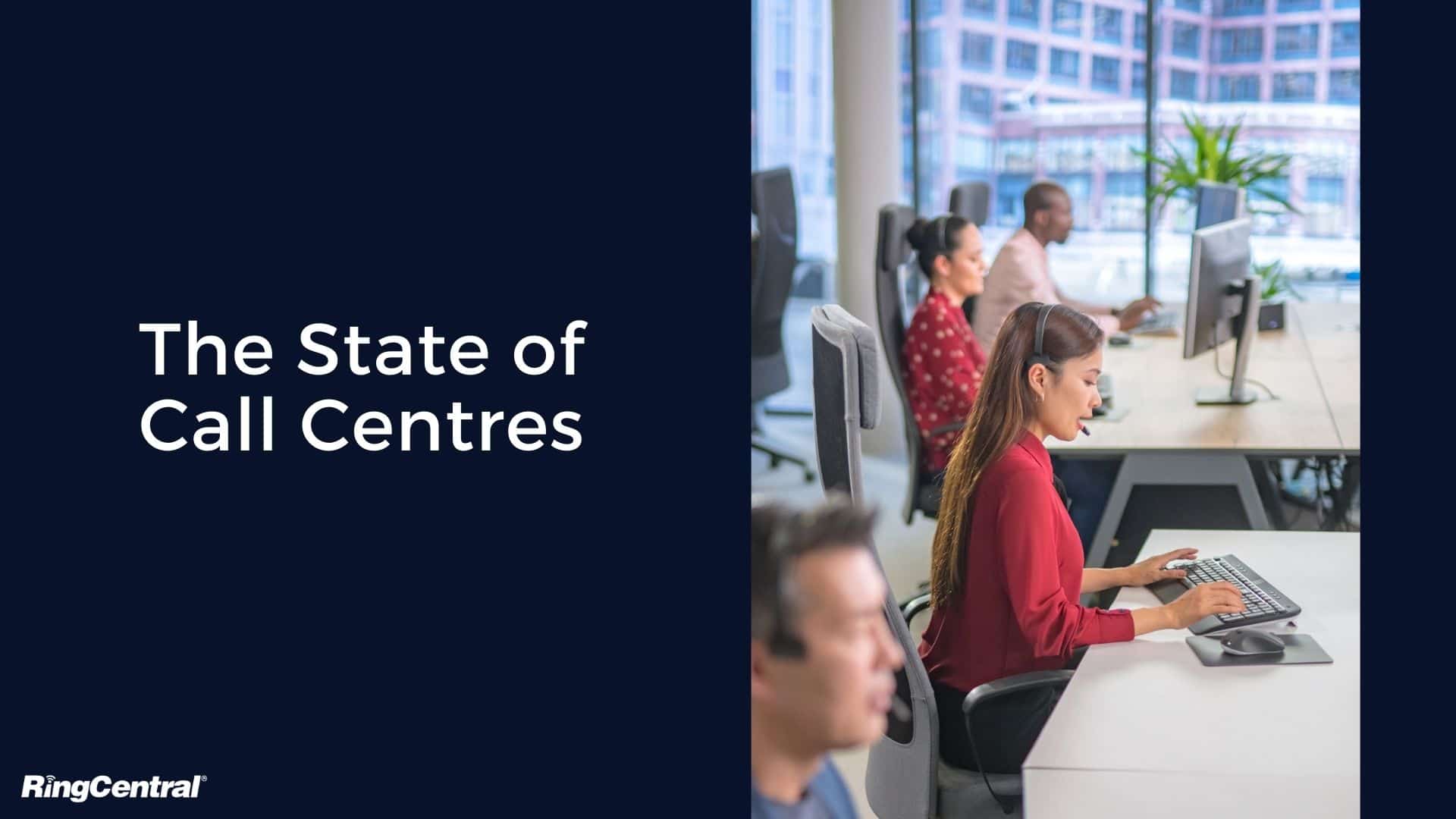
ContactBabel’s report on the state of the industry 2020 – 2024 notes that:
- There over 6000 call centres in the United Kingdom
- There are around 780,000 agent roles within these centres
- Almost 4% of the UK’s working population is employed at a call centre
- The average contact centre has 127 employees
- Retail and distribution focused business have the most contact centres (12%)
- Financial services have the most agents (18%)
Call Centre or Contact Centre?
You might find yourself wondering what the difference between a call centre and a contact centre is. Generally speaking, a call centre refers to a department that handles inbound and outbound calls. A contact centre expands on this, handling email enquiries, social media contacts, and other methods of communication. Going back to ContactBabel’s report, we can see that 18.5% of all contact centre interactions are email-based
These two terms are often used interchangeably – so when we talk about call centre problems, we’re talking about contact centre problems too.
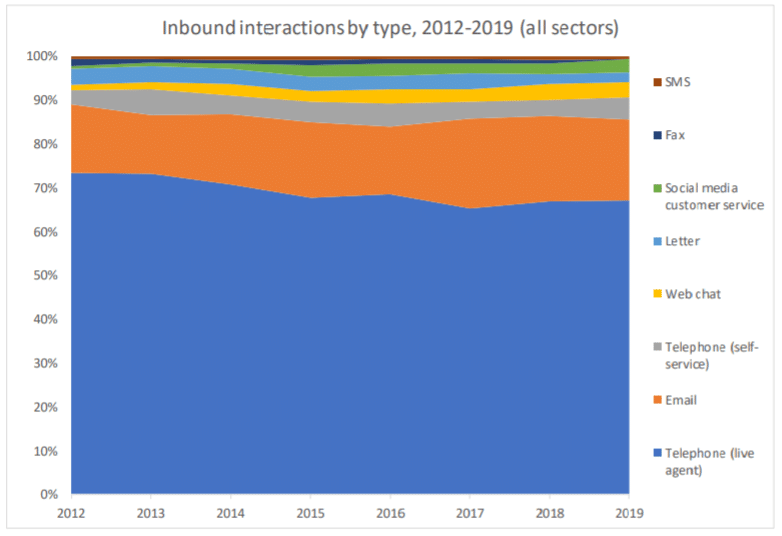

Why Handling Call Centre Problems Needs to Be Top Priority
Unfortunately, call centres tend to have quite a poor reputation. This makes it difficult to hire (and retain) employees, and can make customers approach them in a negative light. Much of this reputation is unfounded, based on stereotypes of telesales teams from the 1980s, but some of it stems from common issues.
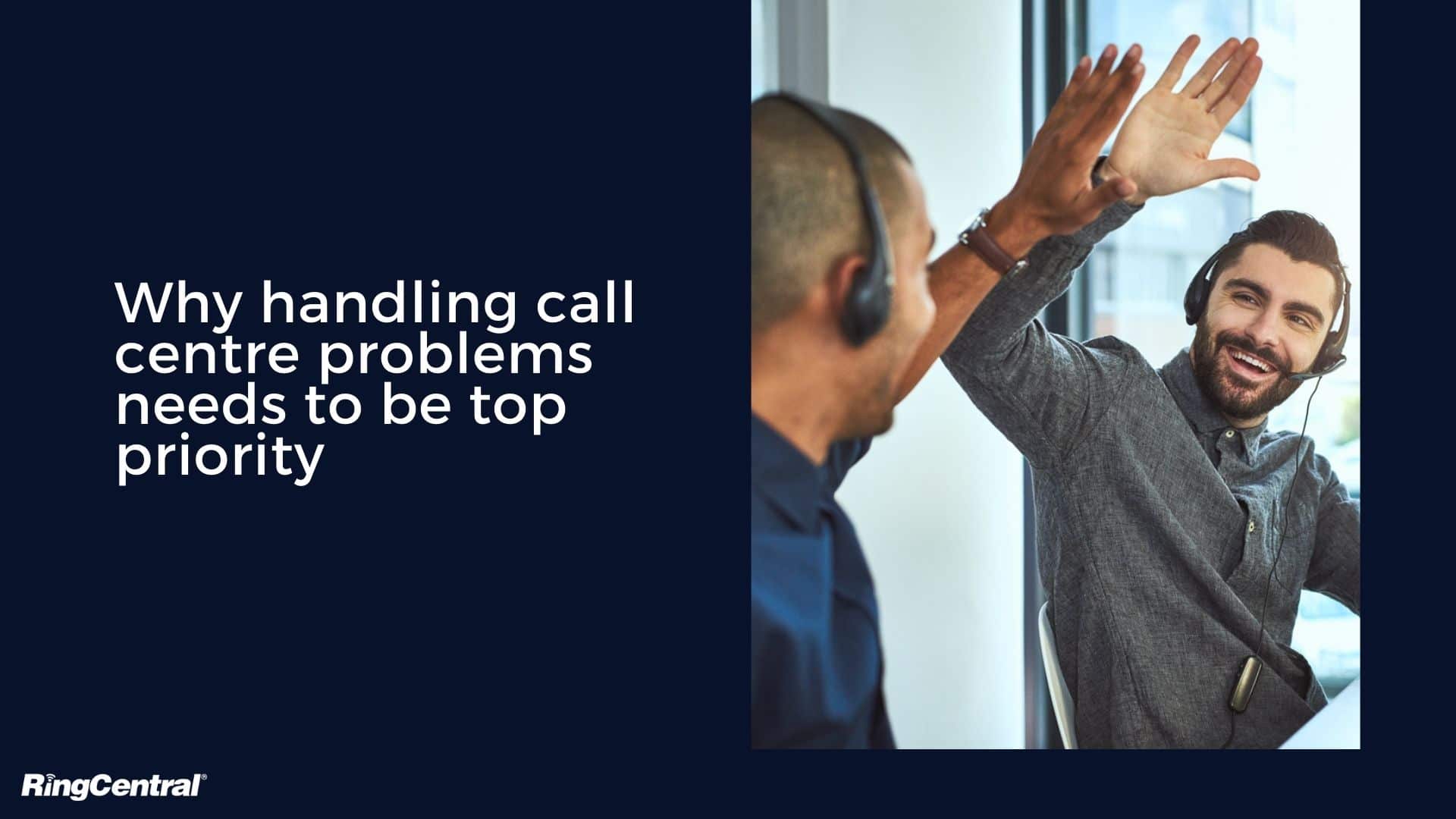
There are two important aspects to consider: customer satisfaction and employee satisfaction.
Customer satisfaction
With the negative reputation that call centres can have, you may find customers reluctant to make use of them. How many times have you been debating calling a helpline, only to weigh up if you have the time to be on hold and the willingness to engage with multiple departments in order to find a solution?
This can lead to situations where customers are unhappy with a product or service but turn to Google instead of you. Rather than being satisfied with their purchase, they’re likely to be underwhelmed and potentially leave negative feedback.
This only worsens when a customer does reach out but experiences poor customer care. They might be passed from agent to agent, have additional products up-sold to them while their issue remains unresolved, or be unable to get a straight answer. Now, as well as having an issue with what they’ve bought, they also have an issue with how they were treated.
It’s important to resolve issues that lead to these outcomes, otherwise, you’ll find yourself with a bad reputation. Online reviews are increasingly important, and potential customers reading multiple complaints about your service team is not a good look.
Employee Satisfaction
Not all of the problems call centres to encounter are customer-based, however. According to the Call Centre Management Association (CCMA), staff turnover is around 26% annually. Considering the national average is 15%, there’s clearly something particularly challenging about the role.
Hiring and training new staff is expensive, so resolving some of the issues we’ll address here can help save you money on recruitment.
Unhappy employees are unproductive employees. McKinsey & Company note that happy and engaged employees are less likely to look for new jobs. They’re more likely to excel at their jobs – they’re 3.3x more likely to feel extremely empowered to resolve customer issues.
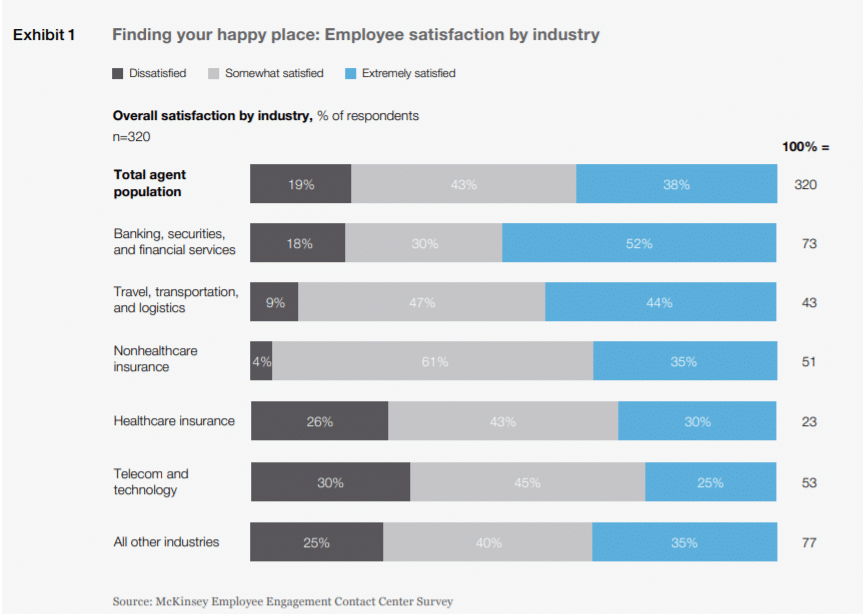
Some industries are better than others, but generally speaking, around 20% of call centre employees are dissatisfied with their job. This rises to 30% in the telecom and technology field.
By resolving these issues, you can create a workplace that people want to join, as well as reassuring potential callers that you can provide excellent customer service.
10 Biggest Call Centre Problems Holding Teams Back
1. Too many tools.
With the rise of the contact centre, rather than just the call centre, the number of tools the average agent uses has increased. It’s no longer enough to simply answer telephone calls and answer questions. Instead, the staff needs to be able to record results and take relevant actions across a variety of platforms.
Many companies rely on outdated systems, adding new solutions as and when they’re needed. This can lead to staff using a mixture of different resources. Without the ability to associate customer interactions over multiple platforms, you miss out on a lot of opportunities.
Having a history of past communication, regardless of platform, gives agents the information they need to provide excellent customer service.
Let’s say you’re an eCommerce business focused on home decor. A customer orders a glass vase through your website and realises after purchasing that they gave the wrong phone number. They use live web chat to update this. A week later, they receive the vase only to discover it has been thrown over their garden fence and has broken. They tweet about the issue and include pictures. After a brief conversation over direct messages, they’re sent a replacement. When the replacement arrives, the same issue happens and they decide to call in.
If each platform requires a separate tool, the agent dealing with this case will only have the information the customer provides them in the call. If the customer is (as they probably are) frustrated, they might not provide full details and a possible resolution could go ignored. They might simply offer a refund.
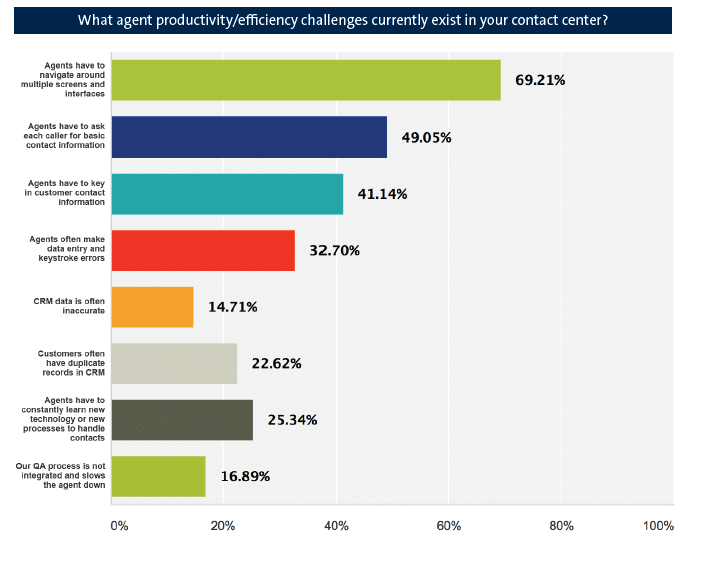
Source: CMSWire
With an omnichannel solution in place, the agent can look at the previous points of communication, assess where the fault lies, and offer a solution. In this case, it may be that the delivery provider has ignored the updated phone number, not contacted the customer, and left the vase in a ‘safe place’ – leading to damage. The agent can then offer a replacement sent through recorded delivery (requiring a signature) at no charge to the customer.
Best solutions:
- Provide an omnichannel communications platform
- Simplify technology requirements as much as possible
- Where multiple tools are required, provide detailed training
2. Conflicting priorities.
It can be unclear as to what the call centre is for. Is it there to make sales, or is it there to resolve issues thoroughly, no matter how long that takes. Sometimes, different people have different goals for it. Your CFO (chief financial officer) might see it as an opportunity to increase revenue, whilst your CMO (chief marketing officer) might want to build your brand reputation.
This can lead to conflicting priorities. Do you try to upsell as much as possible, whilst dealing with calls quickly? Or should you spend longer, giving each customer more personal attention, and not mention other products at all?
The end result of this is your call centre operators being unsure on how best to deal with calls, providing inconsistent service. This is especially problematic when you have a repeat caller, as they may get different advice from different agents. It’s a surefire way to end up with frustrated customers, but it will impact your agents too.
If an agent is trying to hit multiple, often conflicting, goals, their work will suffer. If they’re criticised for something one week, and then praised for it the next, they will end up in a position where they are unable to do their job.
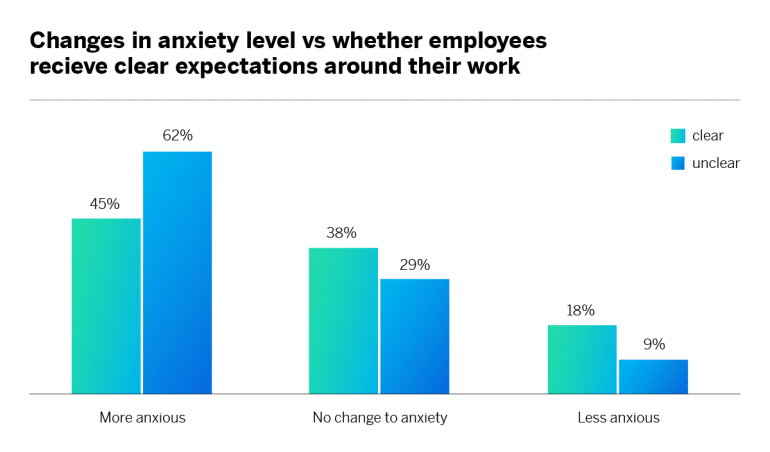
Source: Qualtrics
It’s important to sit down and clarify what your business goals are when it comes to having a contact centre. Once you know this, it should be made clear to your team – and any changes should be clarified in advance.
If you still find yourself with conflicting priorities, you may want to split your contact centre into smaller teams. For instance, if you want to focus on providing detailed service and managing calls quickly, you could create a dedicated section of agents that can deal with long, complex cases. That way, complex cases get the attention they need, but most agents are still free to quickly deal with the simpler calls.
Best solutions:
- Ensure you have clear goals for your contact centre
- If there are multiple goals, split it into departments with set responsibilities
- Keep your team up to date on your priorities if they change
3. Lack of advancement opportunities.
Generally, people want to advance in a career. Call centre jobs often lack opportunities to change roles, or even just develop their skills. This can contribute to high attrition rates, as well as low employee morale. Of course, not everyone necessarily wants to be promoted into a different role – many agents might not want the extra responsibilities of a managerial role. However, they still expect recognition and opportunities.

Source: Zety
To start with, consider if you have clear advancement routes in place. Do you promote internally, hiring supervisors from within your call centre team? Is it easy for employees to see where they might be in a year or two? If not, this is something to address head on – consider what roles might be available, and maybe even create some new ones. Having tier one and tier two agents is one option, with tier two being the more experienced agents who can deal with more complex problems.
As well as this, look into what training you provide. Ongoing training is a huge selling point for many job seekers. You can also offer upskilling courses – for instance, allowing your call centre agents to learn about data analytics, human resources, or graphic design. This can expand their capabilities, but also allow them to progress into a different area of the company if they desire.
As mentioned, not everyone will necessarily want to change roles. However, people may feel penalised if they’ve been working in a role for a few years but haven’t seen any benefits. Encourage employee satisfaction by providing benefits or pay rises based on service length – and retain your best and most experienced employees in doing so.
Best solutions:
- Have clear career paths that involve progression
- Offer training and upskilling
- Implement raises/benefits based on time in the role
Check out the Top 50 Best Call Centres in the UK
4. High-stress environment.
Working full-time in a call centre is often seen as quite a high-stress job, and with good reason.
Not only are stressed staff more likely to leave or perform worse, but customers can tell. Common causes of stress in a contact centre include:
- High number of calls
- Angry or abusive customers
- Lack of resources
- Overwhelming demands (ie, number of calls answered in an hour, average call time)
- Challenging and noisy environment
- Outdated tools
- Lack of recognition and progressions
We’ve addressed a couple of these already, but quite a few of them are customer-based and that makes them difficult to deal with. Obviously, businesses can’t avoid angry customers, but they can provide staff with the tools to deal with them.
Source: Perkbox
One tactic to implement is a solid ‘hang up’ policy. This is especially needed if you expect agents to see calls through until the customer hangs up. No amount of excellent communication skills can mitigate an abusive customer. Allowing your staff to end the call early if a customer is abusive is a great way to ensure they can manage their stress.
Let’s say a customer calls in and is aggressively swearing at a member of your technical department. Rather than expecting the agent to remain on the line, you have a policy that allows them to say something like ‘I must inform you that if you continue to swear at me, I will be ending the call’ and then act on this if the customer continues. This agent can then take a moment to calm down before continuing on with the next call, rather than being trapped in a lengthy and stressful situation that will impact the rest of their day.
Combine this with wellness breaks – a judgment-free moment away from calls if they’ve had an angry or challenging customer. Valuing your team’s mental health is important – that a five-minute break between calls can be the difference between them excelling at the role or quitting due to stress.
Finally, make sure you have a team of supervisors to whom agents can escalate to. Sometimes a customer might not be angry but still challenging. By escalating them to an experienced supervisor, your agents can carry on with calls without worrying about it lowering their performance.
Best solutions:
- Allow employees to take wellness breaks if needed
- Have a robust ‘hang up’ policy rather than requiring staff to stay on a call with an abusive customer
- Have well-trained supervisors that agents can escalate issues to
5. Low employee engagement.
The above couple of points can contribute to this one, but it’s a problem in its own right. Customers can tell when your staff isn’t engaged with their work. Peakon reports that employee engagement is a key factor in whether staff will quit or not.
By implementing many of the solutions we’ve addressed, you’ll be able to deal with some of these issues. However, there are a few more things worth trying.
Firstly, you want to create an appealing work environment. If employees are working in an office, you need to consider the spacing and volume – it’s difficult to engage with work if you can’t hear, after all. Allowing staff to decorate their own desks (within reason), investing in good break facilities, and supplying ergonomic equipment are all good steps towards creating a pleasant environment.
It’s also worth considering your work from home policies – cloud contact centres are more and more common, and you may find employees prefer the flexibility.
After you’ve done that, it’s time to focus on recognising and rewarding achievements. This doesn’t have to be anything major – providing a free lunch once a week can go a long way. Try to emphasise team achievements here, so as to engage all your employees. Rewarding outstanding individuals is great too, but better done more privately to avoid creating a sense of competition.
Finally, and potentially most importantly, solicit and act on employee feedback. If you provide a space where feedback is welcomed and anonymous, you’ll get a lot of ideas you might never have thought of. By acting on this feedback, you can not only improve employee engagement but encourage a sense of trust in the company.
Best solutions:
- Create an appealing and accessible work environment
- Reward staff fairly and often – even if that’s just with a free lunch
- Encourage and act on staff feedback
6. Lack of access to information.
We’ve all been on a call where the agent can’t answer a question. Sometimes you get passed around various departments, while they try to figure out an answer. Sometimes you end up on hold for a long time. Either way, it tends to leave customers frustrated and confused. Often, this is caused by your call centre staff not having access to the information they need.
There’s a theory referred to as the ‘forgetting curve’. This posits that, as time passes, information is forgotten. Whether you’re learning online or in person, it still applies. Even the best training during onboarding can be forgotten, especially when some of it goes unused. Luckily, the counter for this is relatively easy – repetition. By regularly refreshing your staff training, you can increase the chances of it being remembered.

Source: Wikipedia
Of course, with advancements in technology, you don’t need to rely entirely on memory. Creating an easy to navigate knowledge hub for your staff can make a huge difference. Rather than having to pass the call to someone else, they can search for appropriate material in the hub. Just make sure to keep this hub up to date with anything new!
On the note on new things, call centres often suffer when not kept in the loop. If your marketing team is running a social media campaign, your staff need to be aware of it. Otherwise, they’re likely to end up dealing with calls they have no information on.
Best solutions:
- Create an internal self-service hub
- Reassess and improve your training materials
- Inform your team about new products, services, and marketing campaigns
7. Having to be reactive, not proactive.
A lot of time is spent on reacting to problems in real-time, rather than proactively addressing them before they come. Sometimes it’s a staff issue – trying to find someone to cover missed shifts. Sometimes, it’s a more customer based problem – trying to resolve why an area’s phone service has dropped, for instance. No matter the situation, it involves trying to fix an issue while the issue is happening.
This is a tricky problem to solve. After all, we can’t predict the future. However, we can be prepared. AI is often used for risk management, and it can be a great investment for larger companies looking to streamline their call centres. Using AI to allocate staff, map out peak periods for call volume, and generally provide information based on past data is a great way to prepare yourself for the future.
However, not everything can be predicted. In this case, open and honest communication can make an impact. Keeping your call centre agents informed and up-to-date is far better than trying to resolve the problem behind the scenes without letting them know. Yes, it may increase stress upfront but it builds trust in your company and leads to lower stress in the long run.

Source: bit.ai
You can apply the same logic to issues that customers might run into as well. Encourage your team to share issues raised – perhaps in an instant messaging platform. For instance, if you provide software as a service, you may receive a call about there being a server issue. If the agent who takes this call raises it on an internal messaging platform, the tech team will be informed and other agents will be prepared for similar incoming calls. This leads to better customer experience, as callers feel like their issue is already being dealt with.
Best solutions:
- Compile case studies for agents to learn from
- Be willing to overhire, rather than underhire
- Share incoming problems throughout the team, rather than waiting for individuals to deal with them separately
8. Over-reliance on scripts.
A good call script can make sure that the customer gets all the necessary information, as well as encouraging a consistent experience for everyone. However, it can also prevent your agents from reacting appropriately, making judgment calls, or really getting to the root of the problem.
Scripts aren’t inherently a problem, but an over-reliance on them is. As a customer, listening to an agent clearly following a script and refusing to engage with what you’re saying is incredibly frustrating. By providing your agents with the freedom to move off-script, they can provide a better customer experience.
As well as scripts, employees should be trained on the following:
- The best questions to ask to get the root of the problem
- Key phrases that might be used regarding certain issues
- What options they can offer
- How much flexibility they have in offering solutions
- Different listening tactics
Listening seems easy, but there are actually quite a few tactics. There’s active, reflective, empathetic, and passive. Passive listening is the one to avoid here – you want your agents to engage with customers. You might see these referred to by other names. Discussing this could be a whole article on its own, but suffice it to say that they’re worth exploring in your training.

Source: TechTello
By treating scripts as a starting point, you give your agents a place to work from and make resolving most calls very easy. This is especially true of outbound telemarketing calls, where there is a certain amount of information you need to convey. But by letting them go beyond the script, they can forge genuine customer relationships and get better results.
Best solutions:
- Focus your training on how to use the script as a starting point, rather than the only communication strategy
- Give agents some freedom regarding the solutions they can implement
- Focus on quality, not the number of calls
9. Focus on the wrong metrics.
There are so many things that you can track in a call centre, and choosing the right ones can be a challenge. Some call centres try to measure everything, only to end up with a vast array of data that they can’t gain anything from.
Rather, try to find the ones that are most relevant to you. If you’re an outbound, sales-focused call centre then something like average handling time will be less important than the average sale amount, especially as longer calls may lead to higher purchases. For an inbound call centre, first call resolution is hugely important, but the sale amount is no longer relevant.

Source: Finances Online
It’s not just customer-focused metrics you need to take into account. We’ve discussed the importance of employee satisfaction, so keeping an eye on this is well worth it. If you’re going to track their productivity, you should also be tracking their engagement and happiness.
With so much data to handle, it may be time to consider automated solutions. Not only can they gather the data, but they can analyse it too! This allows you to consider reports, rather than raw data. Whether you want to compare your metrics with the last few years or the last few months, automated solutions can provide you with a comprehensive look at what you need.
Best solutions:
- Seek out the areas you struggle with most and focus on them
- Factor in employee satisfaction, not just customer-based metrics
- Employ automated solutions to collect and analyse data
10. Low customer satisfaction.
The point of a call centre is to provide customer service – and if customers aren’t satisfied with that service, you’re doing something wrong. Many of the above problems contribute to this, so by fixing them you’re likely to improve it anyway, but it’s worth considering separately.
A good starting point for resolving this problem is to consider customer feedback. Look through reviews – both on your own site and on dedicated sites like Trustpilot. Pay particular attention to any mentions of your contact centre, both positive and negative. You may also want to actively request feedback in the form of customer surveys.
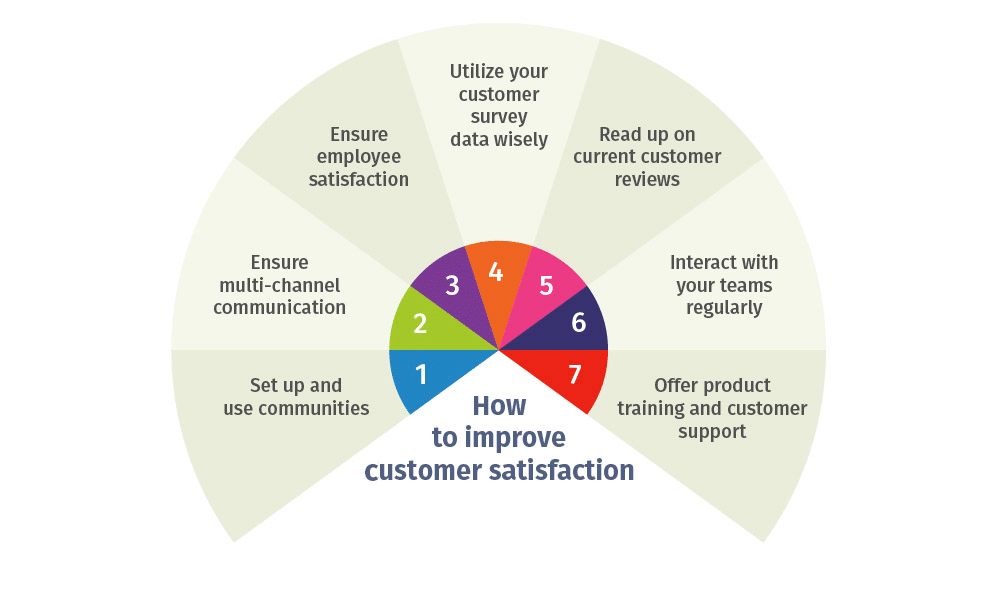
Source: QuestionPro
By looking directly at feedback, you can see what your customers prioritise. This ensures you don’t try to act on what you think is best, but rather, what they want. For instance, you may have spent a few months trying to reduce your average call time on the assumption customers prefer shorter resolutions. However, reading through reviews, you may learn that this has led to callers feeling rebuffed and unimportant. By taking their feedback into account, you can switch priorities – moving away from a focus on short calls to an emphasis on a detailed resolution.
Many customers find themselves frustrated about having to call and speak to a person if it’s something they could do online. If you don’t have a self-service knowledge hub, it’s time to build one. It may also be worth investing in technology like chatbots or live chat, providing options beyond phone calls. Equally, you can make the process of a phone call less frustrating by implementing things like advanced call features like IVR and auto-attendants. This lets customers call through to the right department based on inputted options, rather than being passed around.
By providing a range of options, you let customers access you in the ways that best suit them, rather than forcing them into a one-size-fits-all solution. Not only does this improve their satisfaction, but it reduces the pressure on your team.
Best solutions:
- Seek out customer feedback and make changes accordingly
- Implement new technology like auto-attendants or chatbots
- Provide a customer self-service knowledge hub on your website
Conclusion
Whatever the situation, all of the solutions discussed here can be implemented regardless of location – both in-office and homeworking staff can benefit.
Many call centre problems affect both customers and staff, so any solutions you implement need to take both into account. Contact centres have the potential to be both a great place to work and an easily accessible solution for customer issues, but it takes work to get there. Our top tips are:
- Invest in appropriate technology
- Solicit employee and customer feedback
- Have clear goals
- Provide ongoing training and access to relevant information
- Track and analyse a limited, but useful, range of metrics
There’s a lot more you can do beyond this, but these five points create a strong foundation for you to build on. You’ll see an improvement in customer satisfaction and employee engagement, and build a positive reputation. This can then impact problems further – increasing customers’ willingness to call in, or encouraging people to apply for jobs with you. From here, you can explore more detailed solutions, and build a call centre that’s excellent for both staff and customers.
Originally published Oct 20, 2020, updated Jan 17, 2023



